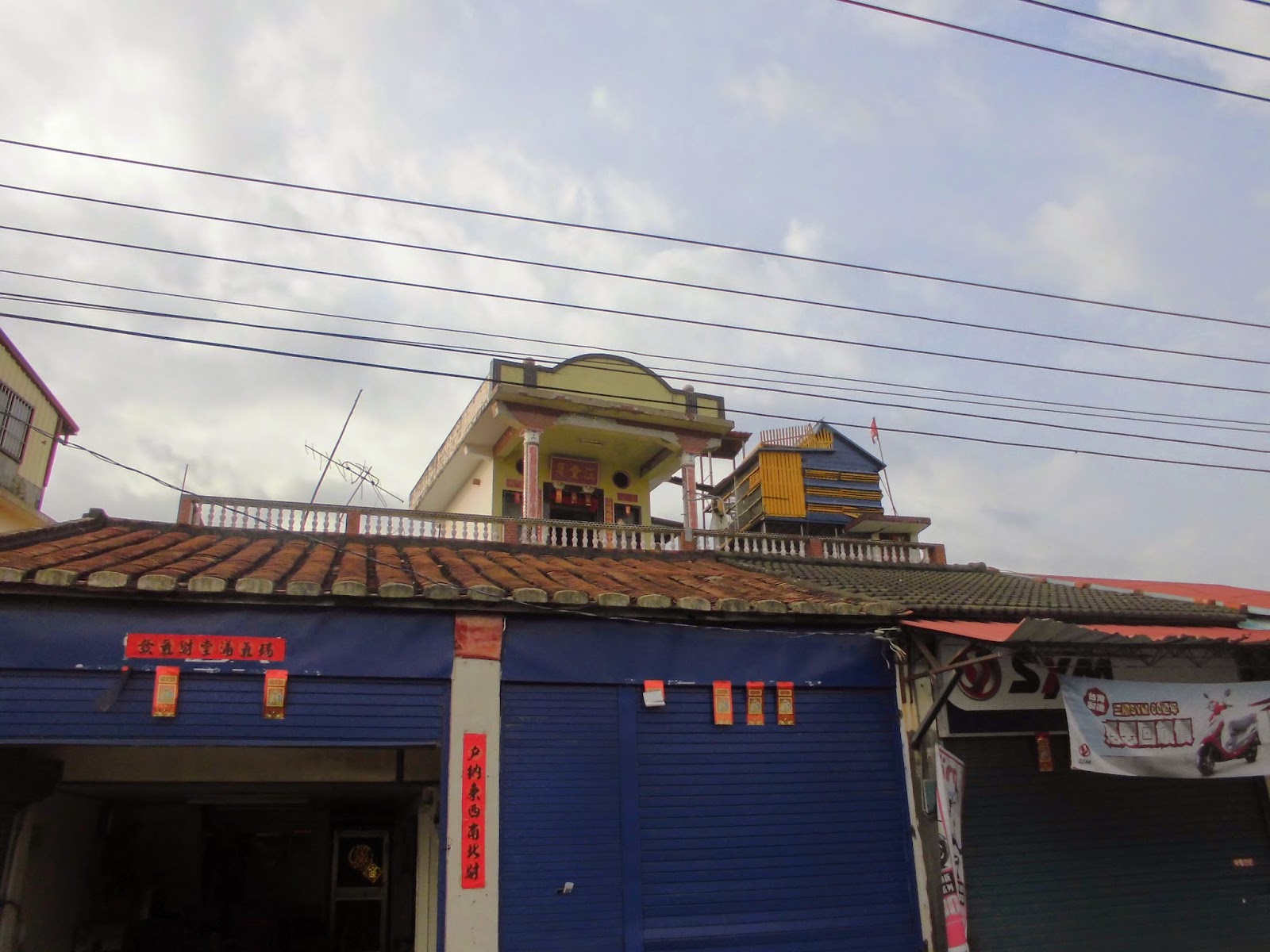I went to Meinong last weekend. Meinong is a small town in the greater Kaohsiung area. It's historically been a Hakka town. (The Hakka are considered a sub-group of Han Chinese. They have their own language, which preserves many features of ancient Chinese I've heard. They're also one of the groups of Chinese who have moved overseas--to places like Taiwan--in large numbers, well out of proportion to their percent of the population in China.)
Hakka cuisine is als really good. The best part of this trip was lunch, of which I have no photos because I don't take photos of food. However, we can see a little bit of what Meinong looks like in the photos below. Keep in mind, I got a late start on this day, so this is not a comprehensive look at Meinong.
美濃は高雄にある村落だ。昔から煙草を作って、「客家」という民族がたくさん住んでいるところとして有名だ。客家といのは漢族の中の民族とされている。客家語もあるし、特別な料理法もある。中国の比較的に人口密度が高くて、土地がないところに住んでいるので、母国での生活が辛くて海外に移った客家もかなり多い。
上禮拜天,我去美濃玩。美濃在高雄市裡,但是離城市中央很遠,在比較鄉下的地方。因為客家人很多所以去美濃最好玩是吃客家菜。除了吃飯以外,我也欣賞看看美濃的風景。(不過,這天我起床晚一點,所以很多地方都沒看。)
I thought these rounded corner buildings were interesting.我喜歡這些圓圓的房子。
Upon leaving Meinong's small town center, you quickly run into rice fields.
ちょっとだけ繁華街から離れたら、もうこういう感じだ。
只要離美濃的中心部一點,就到稻田了。
和風のデザインも取り入れている家だ。和風とは言えないけど、ちょっとそういうのも入っているって感じかな。
Taiwanese Amish?
Farming for Betel nuts and Coconuts.
看到椰子和檳榔就知道在南臺灣。
美濃橋。両端には猿の銅像がある。
美濃橋。有兩隻猴子。
A historic bridge in Meinong that is decorated with monkey statues on either end.
The newer bridge next to the historic one.
向こうに最近作られた橋がある。
These birds were all over in the rivers around here.
The monkey on the other side.
This bridge was built during the Japanese colonial period. I complained about Taiwan's year system in my post about going to Cishan, but here's another reason why its stupid. They put up this plaque saying that the bridge was built in "Minguo Year 19". (That's 1930 in normal years.) In 1930 Taiwan was a colony of Japan, and no one on the entire island was using Minguo years. (They were using the equally silly Japanese system of dating based on the reigning emperor.) The bridge probably originally had a plaque here announcing that it was constructed in "Showa Year 5". The reality is, while there was a "Minguo 19" in China, in Taiwan there never was a Minguo 19. The Minguo system didn't get introduced until the Republic of China government took over Taiwan in 1945 (Minguo 34!)
実は、この橋は日本植民地時代に作られた。下の石碑を見たら、「民国19年」って書いているけど、民国19年というのは、1930年になる。恐らく、ここは元々「昭和5年」と書いてあっただろう。台湾は1945年まで日本に統治されたので、民国1年から33年までは台湾と縁がない年号になっている。
這座橋是日本時代做的。現在寫「民國十九年」,但是因為臺灣以前是日本殖民地的關係,原來臺灣沒有從民國一到民國三十三年,所以應該這裡原本寫「昭和五年」。
This sign was mysterious. I can understand banning cars (not that a car would fit on the bridge anyway) and motorcycles (they were driving across anyway) but banning bikes, and even pedestrians!? If even pedestrians can't use the bridge, who is it for? Monkeys? (Serious guess: Maybe the bridge used to be derelict and they put up this sign to stop people from dying. Then, after they fixed up the bridge they didn't take down the sign. I have no idea though.)
橋の横にこの標識があった。車もバイクも自転車も、いや、歩行者までも駄目なら、この橋はいったい誰が使えるのか?猿?(分からないが、もしかしてこの橋は以前、一時的にぼろぼろなって、当時橋を渡ることが禁止されたかもしれない。今は渡れるけど。)
車子,機車,腳踏車,至於行人都不可以走過。誰用得著?
Reusing an old building.
廃墟に作物
Totoro!
小学校前のトトロ。
An old, Minnan-style house.
閩南式の民家
住在臺灣南部的人可能不會覺得閩南房子好酷,但是對像我外國人來說,非常特殊,有趣。
I like the bricks on the roof.
Snail eggs, I was told.
このピンク色のやつはタニシの卵らしい。
蝸牛的卵子。
The Meinong Town registration center. (Some sort of government office.) It still says "Kaohsiung County, Meinong Town" on it even though all of the counties were merged into cities a couple years back and Meinong is currently "Kaohsiung City, Meinong District". This leads me to believe that the building is not being used as a government office anymore.
このビルは「高雄県美濃鎮」と書いているが、「鎮」は「村」みたいな意味になっている。現在、台湾の県と鎮は全部なくなって、県が市に合併されて、鎮が「区」になった。この看板が変わっていないとは多分このビルはもう政府に使用されていないのではないかと思う。
還寫「高雄縣美濃鎮」
"If it's not tasty, you don't have to pay!"
「美味しくなければ、お金は要らない」
*mrowr*
I thought the design of these balconies was interesting.
バルコニーのデザインはちょっと気に入った。
Tic Tac Toe building
この建物も日本時代に建てられたのかな!?
這棟也看起來是日本時代的。
That's it for Meinong!
終わり。






















































No comments:
Post a Comment